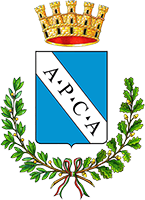
In Amelia and in its territory, the Marian cult has always constituted such a solid point of reference in the believers’ spiritual maturation, that the city itself is largely consecrated to the Madonna: the so many churches, the images, the Marian aedicules are vivid examples of this devotion.
On the same main door of access to the city, Porta Romana, in 1703, an inscription was placed, through which the city of Amelia gave thanks to the Virgin Mary for saving it from a terrible earthquake, that devastated Central Italy in 1703. Above the inscription, there is also an image of the Assumption, attributed to Mario di Amelia (XV century).
In the old town centre, there are many churches dedicated to the Marian cult, such as:
The Church of “Santa Maria dei Laici” or Church of the “Ospitaletto”, where in the 13th century a small hospital was erected by the confraternity of the same name to help the poor and the pilgrims.
The small church houses an image of the Madonna with Child, much venerated in the last century, attributed to Taddeo Zuccari. On the upper floor, there is an important fresco (XVI century), attributed to the Sienese School, depicting S. Maria Dei Laici, who covers with her cloak all those who rely on her.
The Church of the “Madonnina” (or “Santa Maria di Porta”) is characterized by the veneration of a particular image of Mary: the Madonna, who is represented in the attitude of giving milk to the baby Jesus, is known as Madonna del latte. This is a fresco of the 15th century, removed from an arch in an alley of the city.
The Church “Madonna della Visitazione della Confraternita di San Girolamo in Posterola” preserves a fresco that was once located above one of the city gates.
The image was highly venerated, because of the Virgin granted favours and graces, so that Popes Paul III (1548) and Innocent X (1646) gave many indulgences to the believers who had prayed in front of it.
The Cathedral of “Santa Maria Assunta” was built on the highest point of the city. Next to the high altar, a small painted panel representing the Assumption is kept. This precious fourteenth-century work, once attributed to the Sienese painter Duccio di Buoninsegna, is now ascribed to an anonymous local painter. Following an ancient tradition, the image is exposed to the believers’ veneration during the months of May and August, with a solemn procession on the 15th of August.
The Sanctuary of the “Madonna delle Grazie” (XVII century) is in the hamlet of Foce. Here, a highly venerated image of the Madonna (XV century) is preserved. Once placed in a shrine built at the foot of the hill, near the torrent Beccio, on the 13th of May 1629 the holy image was solemnly and miraculously moved to the village, where the present sanctuary was built and where, on the 13th of June 1859, it was crowned with the authorization of Pope Pius IX, as a testimony of the many prodigious events occurred through Mary’s intercession.


